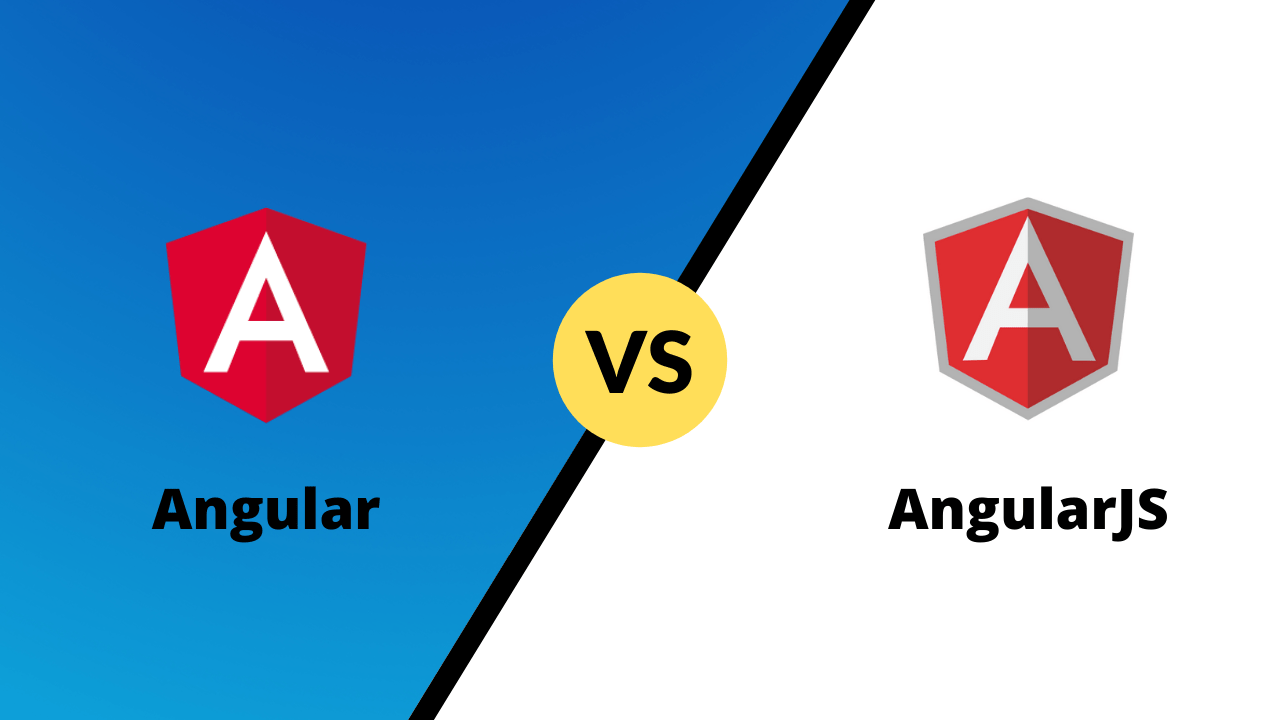
Difference between Angular and AngularJS
Angular 1 or more popularly known as Angular.Js is an open-source JavaScript framework. Google created it for developing highly responsive Single Page Applications (SPAs). It allows the developer to change the static HTML into a highly responsive and dynamic HTML.
On the other hand, the term Angular is used for all other versions that came after Angular.Js. This open-source, front-end framework is specially created for developing web applications. It offers a hierarchy of architecture that supports a hierarchy of components.
The main differences between Angular and AngularJS
Angular is the upgraded version of AngularJS (all versions of Angular after Angular.Js i.e, 2, 4, 5, 6, and 7) that differ significantly from the Angular.Js on various parameters. Some of the differences between these two open-source frameworks are explained below.
1). Architecture
The foundation of Angular is made up of components and directives. Components are directives that have a predefined template. It offers a modern structure to build an application. This robust structure makes it easier for the developer to create and maintain large and complex applications.
Angular.Js on the other hand supports the Model View Controller (MVC) architecture. It has a simple and robust architecture. If you want to create a web application using Angular.Js you have to put the underlying business logic in the model, and the preferred output in the controller. Subsequently, the entire processing work will be done by the Angular JS to give you the requisite output. In this system, the model pipelines are spontaneously generated by the Angular.Js.
2). Language
Angular.Js uses JavaScript to develop an application. However, Angular2 and its later version use typescript to create a web application. TypeScript is more comprehensive than JavaScript and offers more features to the developers to create web applications. It improves the performance and helps avoid some of the runtime errors that made Angular.Js unsuitable for developing larger and complex web applications. Furthermore, TypeScript is an object-oriented programming language. This makes the code written in this language simple, clean, and reusable. JavaScript is mainly used to enhance HTML pages, especially on the client-side. On the other hand, TypeScript is more comprehensive and can be used to develop a JavaScript application for both client-side as well as server-side.
3). Dependency injection
Angular and Aungular.Js both use dependency injection. However, the way they do it are completely different. In the Angular.Js, dependency injection is inserted into various link functions, directive functions and controller functions. However, in the Angular programming language, it uses a hierarchy dependency injection system that make use of the constructor function, declarations, and providers.
4). Angular CLI
Command Line Interface (CLI) is a major distinguishing feature that puts Angular in a different league compared to the Angular.Js programming language. All Angular variants come with their CLI. This is used to generate components, services and other elements that help the developers to complete the project swiftly and efficiently. This feature helps to generate different types of the same project for varied platforms with inbuilt dynamic type checking, linting et cetera. You would not find this feature in the Angular.Js programming language.
5). Expression Syntax
Angular programming language has a greater intuitive ability when dealing with data binding. On the other hand, if you are using Angular. Js for a project, then you must remember the ng directive to bind a property or an event. Angular language use () for event binding and [] for property binding.
6). Performance
Amongst the two, Angular is much quicker than Angular.Js. It has been proven that Angular based applications are nearly 5 times faster than those applications that are made through Angular.Js. The reason why Angular.Js applications are significantly slower than Angular web applications is due to the two-way binding method it uses. To operate two-way binding, Angular.Js has to repeatedly check each scoped variable against its previous value using a digest cycle. Since the cycle runs randomly, it forces the size of the program to grow, which in turn affects the checking. This limits the performance of the application.
Compared to Angular.Js, Angular-programming languages use a flux architecture, wherein the change direction is implemented through the unidirectional data flow. This helps in improving its performance significantly.
7). Mobile support
Amongst all the features of Angular, the one that makes it superior to Angular.Js is that it supports mobile development. Angular.Js sadly does not offer the service that is a huge drawback in this age, wherein mobile-first computing is an essential part of any web app development.
Conclusion
Angular.Js when first released was very popular amongst the developers because it allowed them to develop responsive web applications and dynamic design. However, over time as new frameworks like the React.Js was introduced in the market, the developer began to notice a few limitations of Angular.Js.
Also, a lot of talk started happening between Angular.js and React.Js, like which framework to use for the project? To decide one, refer this awesome guide on Angular.js Vs React.js.
At present, Angular offers one of the best open-source frameworks for developing large and highly complex web applications. Google has continuously improved this framework by releasing new variants at regular intervals. It has ensured that this open-source framework remains the top programming language for creating an enterprise-level application.
